
Article contents

The best private pension for the self-employed is PensionBee, it’s easy to use, has low fees, excellent service and a great track record of growing pensions over time – and you can pay in from your limited company (if you have one) – get £50 added to your pension for free too. There’s also Beach, you can save within a pension and an ISA (for general savings) at the same time.
Are you self-employed? Thinking about how you’ll pay the bills when you retire? Know you should get a pension but not sure where to start?
No worries. Setting up a pension when you’re self-employed is much easier than you think and it will give you peace of mind later on in life. Here’s everything you need to know, from the basics of pensions, to how you go about finding the best one for you.
And if you’re in two minds whether to start a pension or not, do it, right now! The sooner you start, the better off and more secure you’ll be in retirement. Starting a pension is often the best financial decision you’ll ever make.
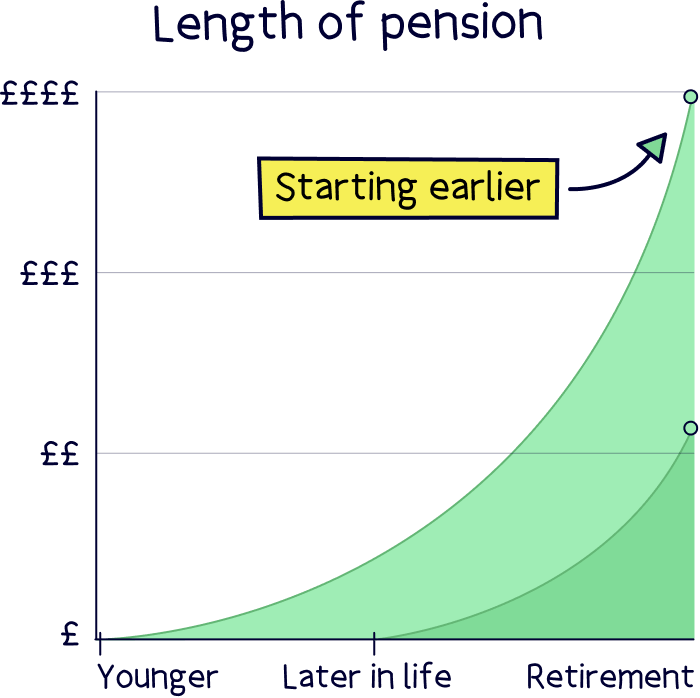
Before we get into the finer details of self-employed pensions, if you’re just here for the best private pensions for self-employed people, well, here they are…
PensionBee comes out top, it’s easy to use, has low fees and you can pay in from a limited company.
Get £50 added to your pension



PensionBee is our recommended provider – they’ve thought of everything.
Their 5 star rated app (and website) makes it easy to set up and use. You can open a brand new pension, or transfer your existing pensions across (they’ll handle all the paperwork).
Simply pick from an easy to understand range of pension plans, and that’s it, the experts manage everything from there.
It’s low cost, with one simple annual fee. The customer service is excellent, and you’ll get a dedicated account manager for any questions you might have.

And, when the time comes to retire, withdrawing from your pension is easy too.
You can also use them if you're self-employed or a company director.
Great app



A great and easy to use pension. Add money from your bank or combine old pensions into one, (they’ll find lost pensions too).
The customer service is excellent, with support based in the UK.

Beach is an easy to use pension app (and easy to set up), where you just add money and the experts handle everything. It’s all managed on your phone with a great app, and you can see your total pension pot whenever you like.
If you’ve got lost or old pensions, Beach can also find them and move them over too, so you can keep all your retirement savings in one place, and never have to worry about losing them in future.
You’ll get an automatic 25% bonus on the money you add to your pension pot from your bank account (tax relief from the government), which refunds 20% tax on your income, and if you pay 40% or 45% tax, you’ll typically be able to claim the extra back too.
The pension plan (investments) are managed by experts, who are the largest investment company in the world (BlackRock). And they consider things like reducing climate change, meaning your savings could make the world a little better in future too.
You can also save and invest alongside your pension with an easy access pot (access money in around a week), designed for general savings, with the investments managed sensibly by experts too. And money made can be tax-free within an ISA.
Fees: a simple annual fee of up to 0.73% (minimum £3.99 per month).
Minimum deposit: £25
Customer service: excellent
Pros:
Cons:
PensionBee comes out top, it’s easy to use, has low fees and you can pay in from a limited company.
If you're a bit unsure about pensions and would prefer to speak to an expert, check out Unbiased¹ – it's a free service to find pension experts (financial advisors) in your local area.



Unbiased is a great online service to help you find expert financial advisors who can help with your pension.
It’s very popular, with over 10 million customers, and pretty much the go-to-place to find pension advisors local to you.
All advisors are fully vetted, qualified and have years of experience.
You’ll be able to chat on the phone, video call, or visit in person (depending on the advisor).

It’s free to use the service, you’ll pay the advisor directly if you choose to use them (fees vary per advisor and service you’d like).
PensionBee comes out top, it’s easy to use, has low fees and you can pay in from a limited company.
Pensions can seem a bit complicated, but they’re super important to help build a comfortable retirement income – and even more so for those self-employed, who don’t have an employer handling it for them (and even adding money in themselves).
So, to make things super easy for you, as a self-employed person, we’ve put together the best pensions for the self-employed, and here’s the criteria we’ve used:
There’s a fair few pension providers, but we’re just showing you the ones we think are the very best – ones that we recommend to our friends and family, and use ourselves here at Nuts About Money. So, you can be confident that whichever one you pick, you’ll be using the best too.
Good question! A personal pension is pretty much exactly the same as a private pension – in fact, when most people say private pension they mean a personal pension.
A personal pension is actually a type of private pension, one that you set up yourself (you decide which pension provider to use), how much you want to pay in, and when, and even where your pension money is invested (often picking from easy to understand pension plans).
The main alternative type of private pension is a workplace pension, which is set up for you if you’re employed.
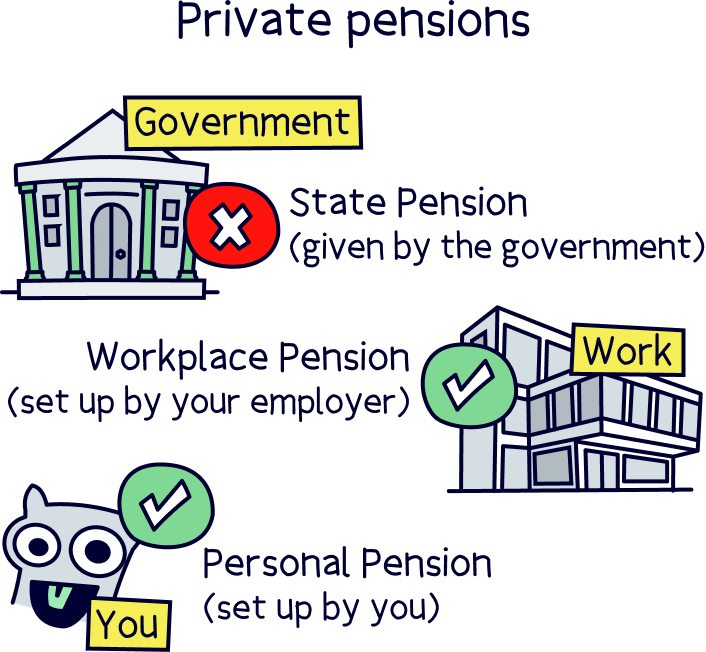
Both pensions are private to you (you own all the money). Whereas the Government pension, called the State Pension, is still owned by the Government. You’ll currently get £230.25 if you’ve paid enough National Insurance contributions over the years (at least 10 years, but 35 years for the full amount), and when you reach State Pension age (currently 66).
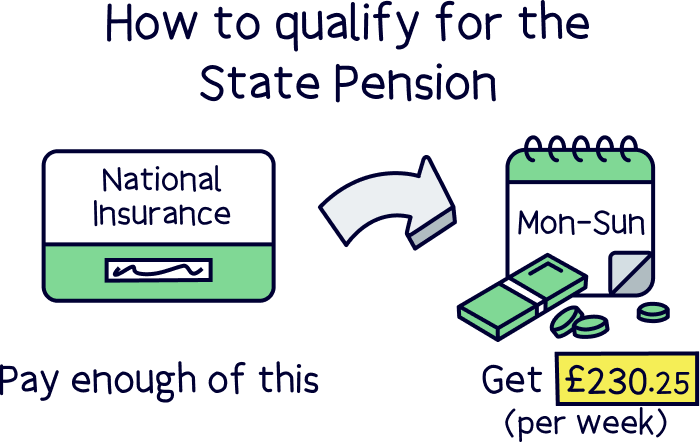
As a reminder, we think the best personal pension for self-employed people is PensionBee¹. It’s easy to use, low fees and a great record of growing pensions over time. And here's a list of all our top recommended pensions.
A pension is a pot of money put away for when you retire, to provide you with an income that hopefully matches the lifestyle you’ve become accustomed to, so you can continue to live your life in the same way, just without the work, hurrah! Or, you could spend it all on gardening – you might be into gardening when you retire, everyone over 60 seems to be.
Ideally, you’d typically add money to your pension throughout your working life, this money goes into something called a pension fund. Your money and thousands of other people's money will be invested sensibly across many large and stable companies in the UK and across the world. It can also be invested in things like bonds, which are large loans that pay interest.
You can estimate your total pension pot at retirement and your yearly retirement income with our pension calculator.
Pensions are very long-term investments, which means they aim to grow large over time, however, there will likely be ups and downs along the way, but ultimately over time, they should grow significantly.
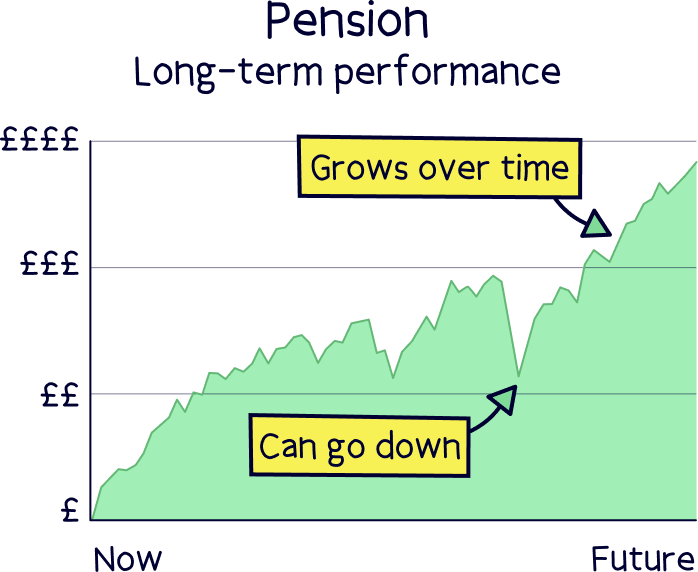
They also come with lots of tax-benefits, such as tax-free saving (as it grows), and you can save into them tax-free too – we’ll cover all this below.
The good news for employees of a company is that it’s all handled by the company itself in partnership with a pension provider (the people who look after their pension), all through their monthly pay, called PAYE (Pay As You Earn), and they’ll see it on their payslip. This type of pension is called a workplace pension.
They would also be automatically enrolled into it, and the business also has to contribute a minimum of 3% of their salary by law too, if they pay in 5% that is.
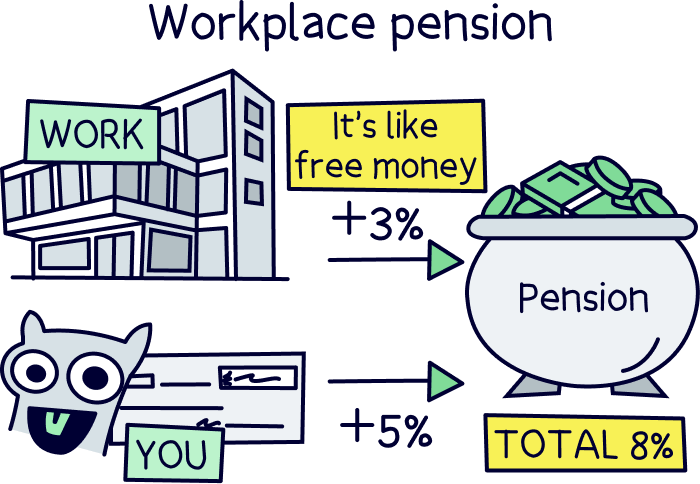
It all works very well and it’s great for employees. But what about if you’re self-employed?
Being self-employed comes with all sorts of perks – set your own hours, approve your own holidays, have longer lunches etc. But it does mean you'll need to plan for your retirement, as you’ll have to sort your pension out all by yourself.
Instead of a typical workplace pension scheme, where your employer handles everything for you. A self-employed pension is managed by you, you decide how much you’d like to add, and when to add it. But don't worry, it’s easy to do! We’ll run through it all below.
To help out, the Government will automatically top up your pension contributions by 25% to make them effectively tax free like a workplace pension. We’ll dive into that more below too.
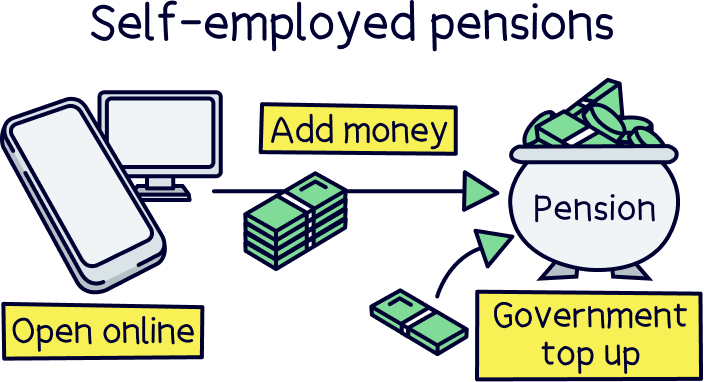
As a reminder, a self-employed pension is technically called a personal pension or a private pension, rather than a self-employed pension – as you don’t have to be self-employed to get one, employed people can also top up their pensions with one too.
Yes and no. A self-invested personal pension (SIPP), is a personal pension that you set up, and you decide how much to pay in, and you get all the same great benefits as the personal pensions we’re talking about (as they are technically the same). So that’s things like the 25% Government bonus on your pension contributions (explained in detail below).
Except, traditionally, a SIPP is where you make all the investment decisions yourself – and really only for experienced investors.
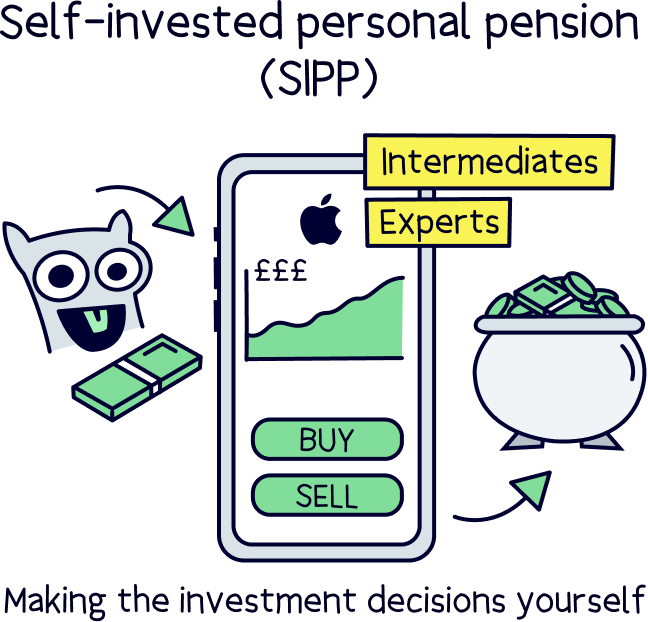
However, to confuse things a little, there's now modern SIPPs where you simply pick from a few easy to understand investment options (like a standard plan or an ethical (environmentally friendly) plan).A couple of examples are our recommendations PensionBee¹ and Beach¹.
If you are interested in making your own investments, check out the best SIPP providers.
The Government wants you to save as much as possible into your pension – it helps the economy, makes you wealthier and allows for less reliance on the State Pension in future. So they let everyone contribute to their pension tax free (in boring finance terms, pensions are tax-deductible).
Don’t worry, it may all feel a bit complicated or confusing, but a good pension provider will actually handle everything all for you automatically, including the tax. A self-employed pension really is as easy as a workplace pension (almost!).
And if you’d like to learn more, here’s how the tax relief actually works if you are self-employed…
As you’ll know, self-employed workers' pay is different to employed people – you don’t have an employer to handle everything, you have to pay tax yourself, and if you want a pension, you have to contribute to your pension yourself too.
This means you can’t make contributions to your pension before you pay tax like employees. You have to pay tax on everything you earn, so you’ve already paid tax on the money you’ll put into your private pension.
So, to give you back the tax you’ve paid on your income, and to make your pension contributions tax free, the Government will top up the contributions you make to your pension with a bonus – yes really!
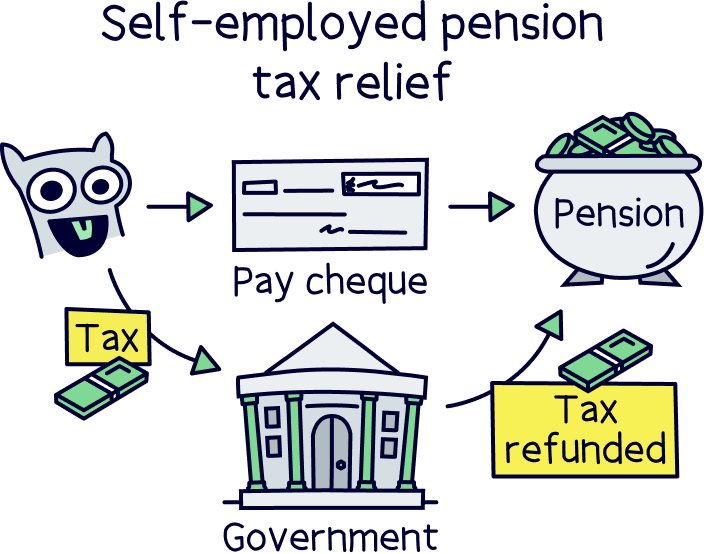
If you’re a basic rate taxpayer (which means you earn up to £50,270) the Government will give you the 20% back in cash, directly into your pension – which works out as a 25% bonus on what you put in. That’s £25 for every £100 you pay in. So, you’d end up with £125 in there, just by putting in £100!
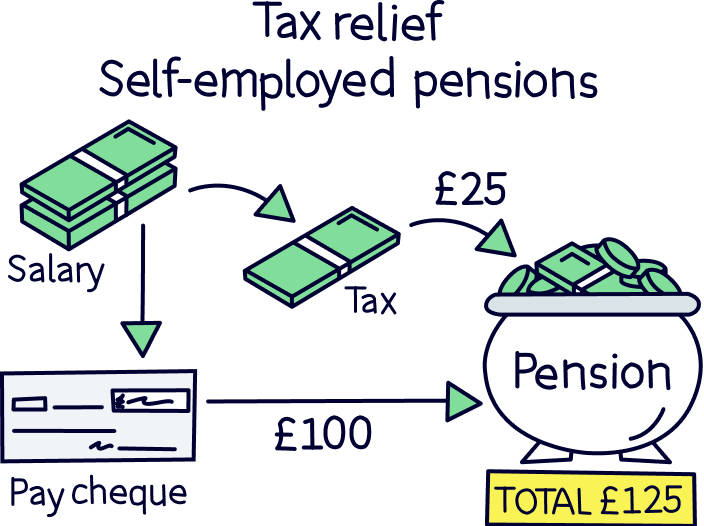
And if you pay the 40% higher rate tax, you can claim that 40% back too (or 45% if you’re an additional rate taxpayer).
However it’s not automatic, but is pretty easy, all you need to do is claim this back from HMRC via your Self Assessment tax return.
But do watch out, as there are limits on how much you can put into your pension per tax year and still claim tax relief. The limits are either 100% of your earnings (your annual salary) or £60,000, whichever is the lowest. This is called your annual allowance (explained below).
When you choose a personal pension provider, you can move any old pensions from old jobs over to your shiny new pension, so you can keep all your money in one place, track it properly, and invest it all in the same pension plan, potentially benefiting from cheaper fees too. This is called pension consolidation.
There’s no need to panic about lost pensions of money squirreled away and forgotten (yes, it happens a lot more than you think). A good pension provider can hunt down your old pensions for you. You’ll just need to tell them the name of your old pension providers and any reference numbers you may have, and then after that, you probably won’t have to do a thing!
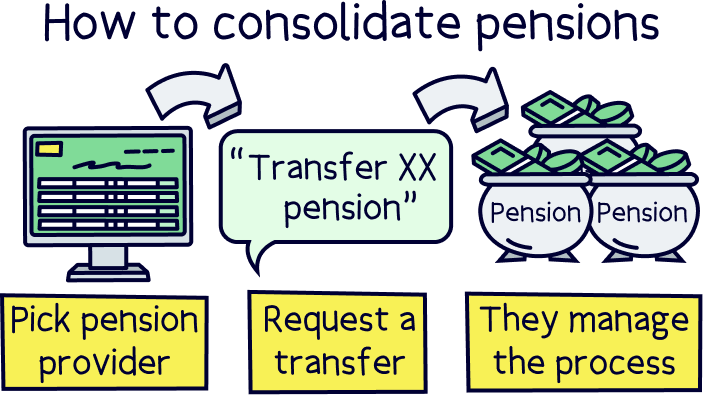
The good bit is, it’s really easy to set up a self-employed pension. Technology has really changed the industry and it’s all done via a website or an app on your phone. Although you can still speak to someone if you’d like.
All you need to do is find a pension provider that’s best for you, and they’ll pretty much handle everything. Modern pension providers come in the form of apps and websites, which have up-to-date information to show you how much your pension is worth at any time, and tools to show you how much you should be contributing to meet your retirement goals.
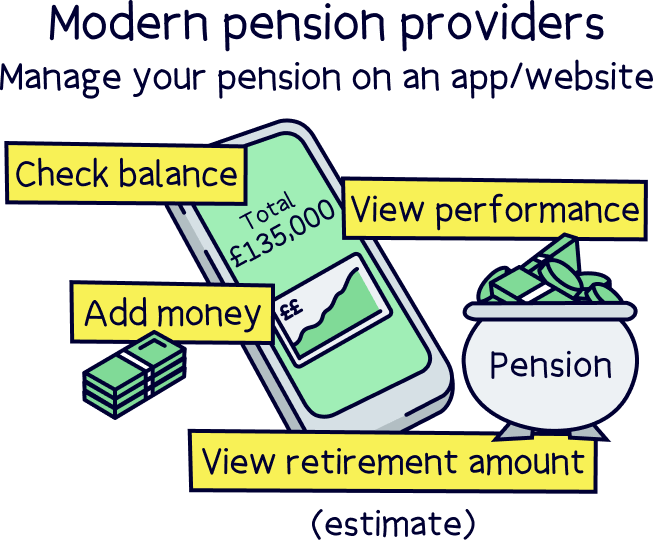
Best of all, you now get to decide where your money is actually going. So if you only want to invest in companies doing good in the world (like we do), and avoid the evil oil and tobacco industries, you can!
So, to get a pension, all you need to do is find the best provider for you. And luckily for you, we’ve done the hard work and reviewed them already.
If you’re not sure where to get started with a pension, check out PensionBee¹, it’s easy to use, low cost and has a great record of growing pensions over time and has great customer service. We’ve also managed to bag you £50 off if you sign up with Nuts About Money.
Or, check out the best pension providers for all the top options.
Yes! The State Pension is a benefit paid by the government to everyone who has made National Insurance contributions over their working life, whether they have been employed, self-employed, or a combination of the two (National Insurance is a payment you make to the government alongside your taxes, to cover things like the NHS and the State Pension itself).
As a self-employed person, you are entitled to the State Pension just like anyone else, as long as you qualify by making enough contributions during your working life. To qualify you’ll need at least 10 years worth of National Insurance contributions, and 35 years to get the full amount.
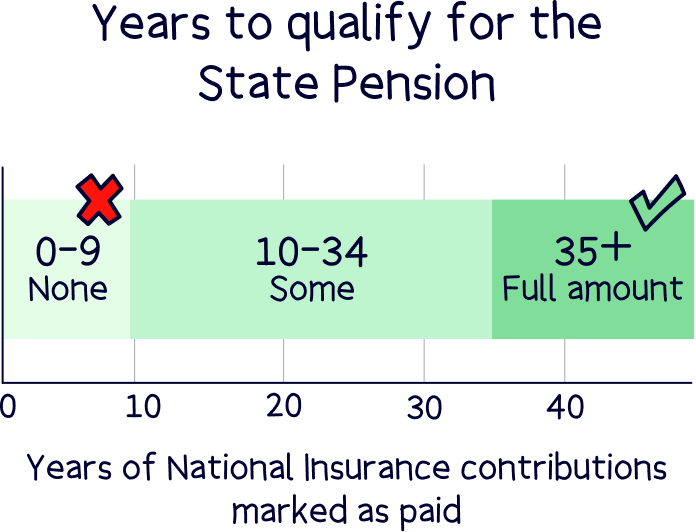
However, the amount you’ll get is not a lot of money. To put it plainly, you might struggle to live on it if you only had the State Pension to fall back on, without the support of a personal pension to supplement it. It’s currently only £230.25 per week.
And if you have been self-employed for some time and had some lean times where you didn’t earn much, you may not have met the threshold to qualify. In other words, you may not have made any National Insurance contributions, or you may just not have made enough.
Nuts About Money tip: Check the age you'll get the State Pension with our State Pension age calculator. There’s also a handy tool for checking what you may be entitled to, the State Pension Forecast.
You can pay as much or as little as you want into your personal pension, although bear in mind, you’ll only get tax relief on the lower amount of either your total income or £60,000.
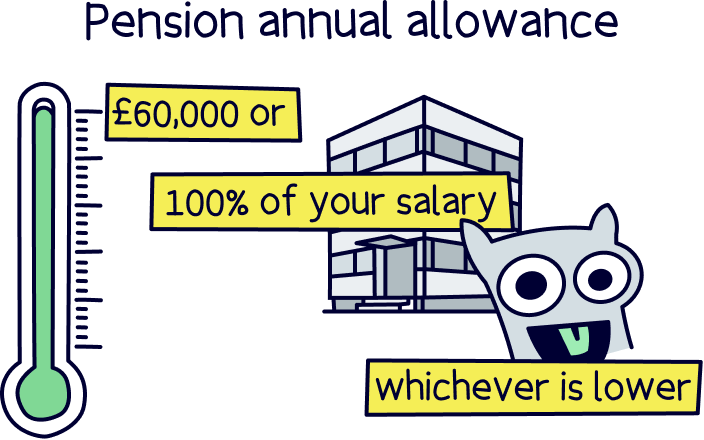
Generally, it’s advised to regularly add as much into your pension as you can afford, as early as you can. That’s because your money compounds over time, this means the money you put into your pension also then begins making money itself too.
For example, if you started with a pension worth £10,000 and were able to save £220 per month, and it grew by 7% per year on average, after 25 years, you’d have £235,470. And, another 10 years after that you’d have £511,294! Just one year after that it would grow by £35,791!
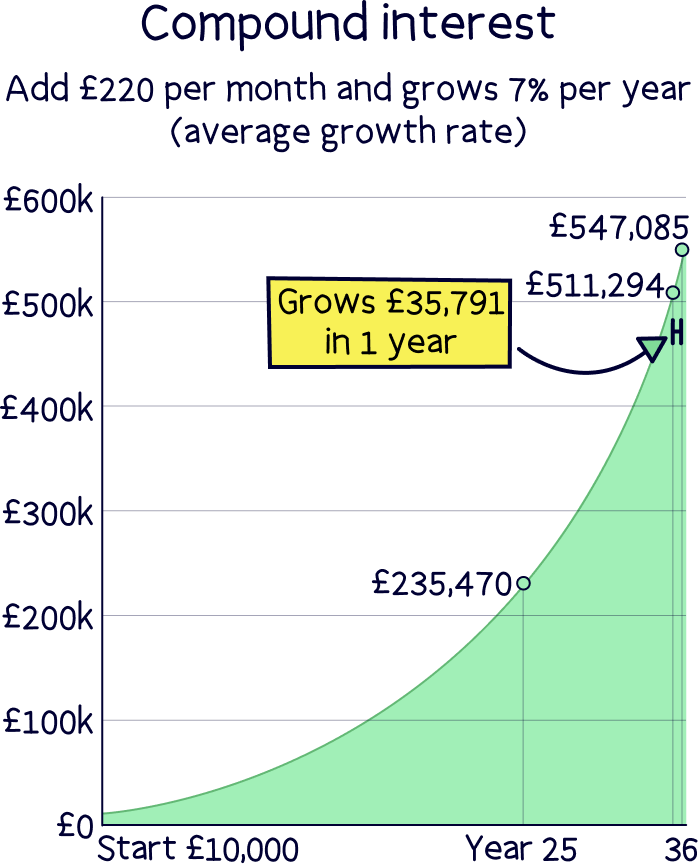
This is how you can grow a small figure into a very large amount over time. Called compound interest.
Note: you need to make sure you can comfortably afford to say goodbye to your monthly contributions, as you won’t be able to spend it again until you hit 55 years old! Having said that, we see this as a good thing, it's very tempting to spend savings!
Nuts About Money tip: look at your monthly budget and see what you can afford after your outgoings like bills and other expenses, and leave enough savings easily accessible for emergencies (maybe in a tax-free ISA). As I'm sure you know, as a self-employed person, it’s also important to take into account any fluctuations in your monthly income, which can often vary month-to-month.
By the way, you can easily make one-off top ups into your pension too – you don’t have to have a set monthly figure, although it is recommended if you can, regular payments will soon add up over time.
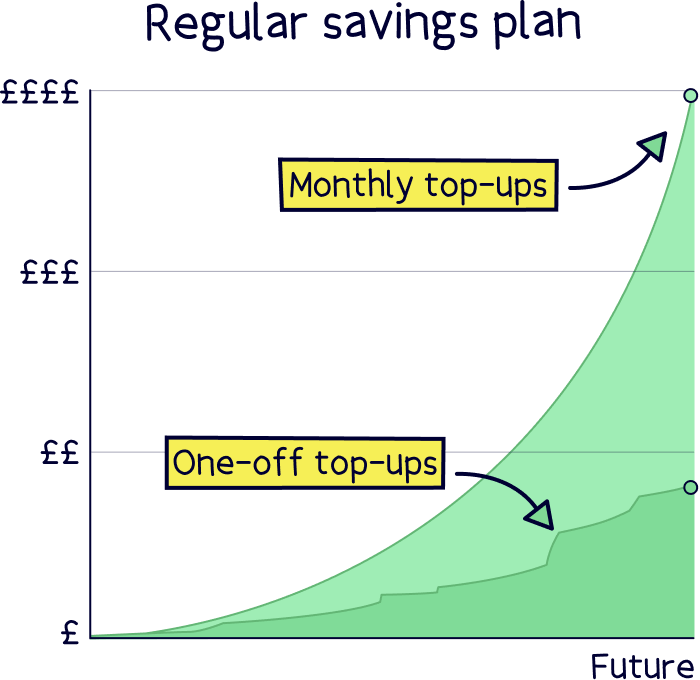
Here are a few other questions you should ask yourself when you’re deciding how much money you should squirrel away into your pension:
To estimate your total pension pot at retirement and your yearly retirement income use our self-employed pension calculator.
You’re probably wondering when you can get your hands on all that cash you’ve saved!
You can currently access your pension from the ripe old age of 55. And from 2028 it will be from age 57.
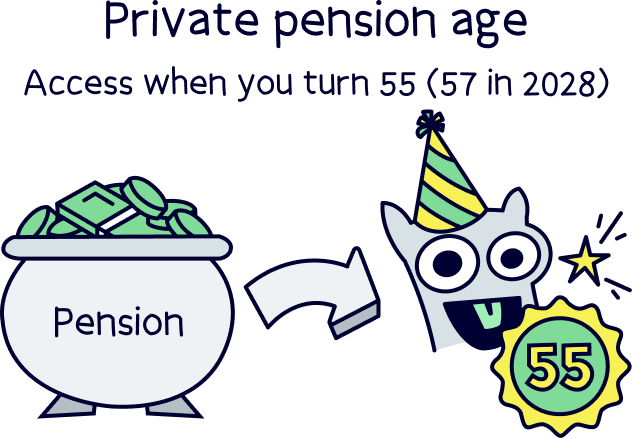
However, only the first 25% is tax free, which if you like, can be taken out as a lump sum. We only recommend doing this if you really need the money, it’s better to let it grow more!
The remaining 75% you’ll have to pay Income Tax on, just like your income now or a salary at work. But typically most people will leave their pension alone until they decide to fully retire, which can be well over the age of 60 these days.
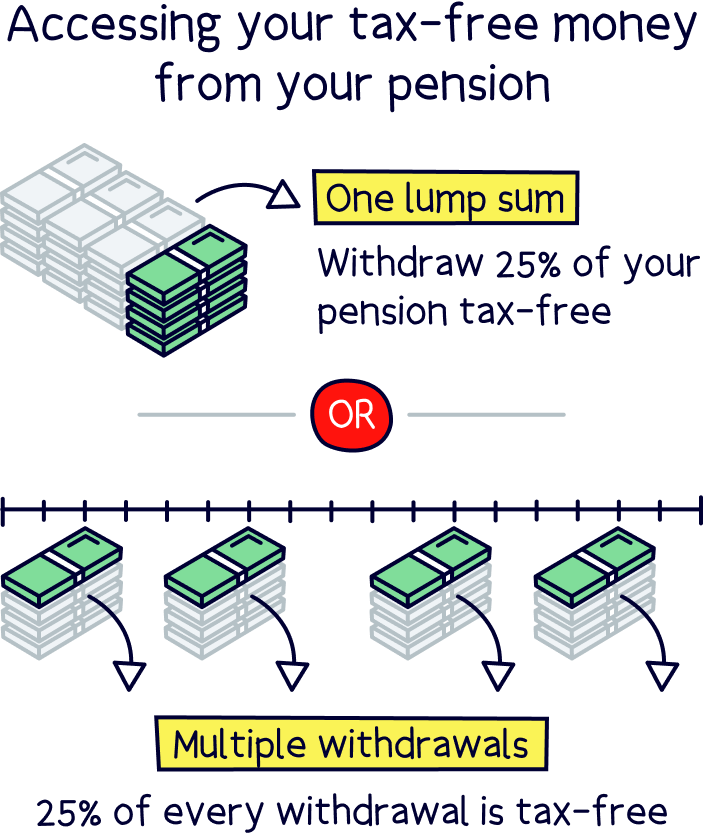
When the time comes to actually retire, you can either leave your pension where it is, and withdraw money from it as and when you need it (e.g. monthly), allowing the remaining money to keep growing – which is called pension drawdown (and becoming very popular).
Or, you can opt to trade in your pension pot for a pension annuity, which is a guaranteed income for the rest of your life (or a set number of years). Or, you can even do a combination of both.
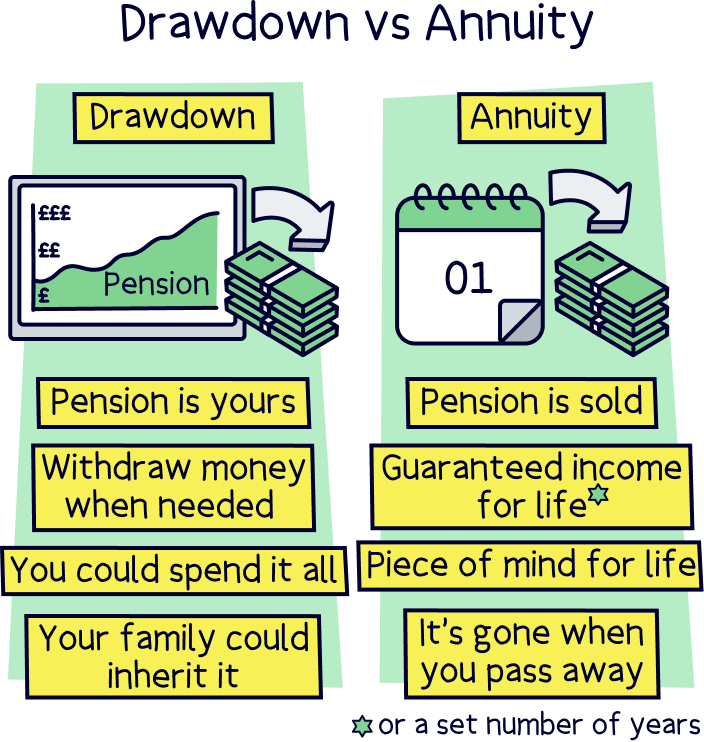
To learn more about this, here’s our guide to drawdown vs annuity.
Nuts About Money tip: If you are nearing retirement and would like more advice, you can speak to a pensions advisor for free, with Pension Wise, a Government scheme.
So now you know how easy it is to start a pension when you’re self-employed, there’s no excuse not to get started! Start saving now, it really is worth it, and you’ll be set for later life.
Our top recommended pension provider for self-employed people is PensionBee¹, it’s easy to use, has low fees and a great record of growing pensions over time. Plus, with Nuts About Money you’ll get £50 added to your pension for signing up.
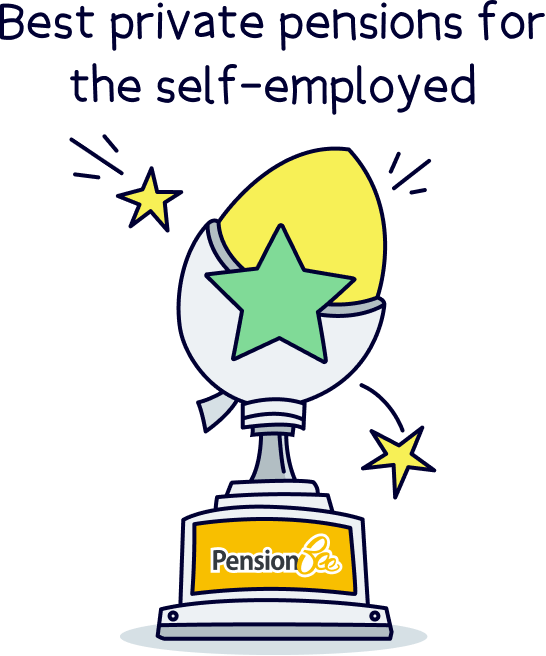
On the other hand, Beach¹ is great if you want to save in other kinds of savings accounts alongside a pension (like a tax-free Stocks & Shares ISA managed by a team of experts), meaning you can track all your investment savings in one place. It's also easy to use with a great app.
For all the top options, check out the best pension providers.
Whichever pension provider you decide to use, the important thing is to squirrel away as much as you can comfortably afford every month, so you can really enjoy those sunset years.
If you want to find out more about pensions visit our pensions page.
PensionBee comes out top, it’s easy to use, has low fees and you can pay in from a limited company.
We’d love to hear from you, and it will help others too.
PensionBee comes out top, it’s easy to use, has low fees and you can pay in from a limited company.